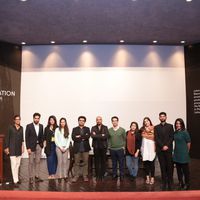Interview with Adeela Suleman | VASL Artists’ Collective | Karachi, Pakistan
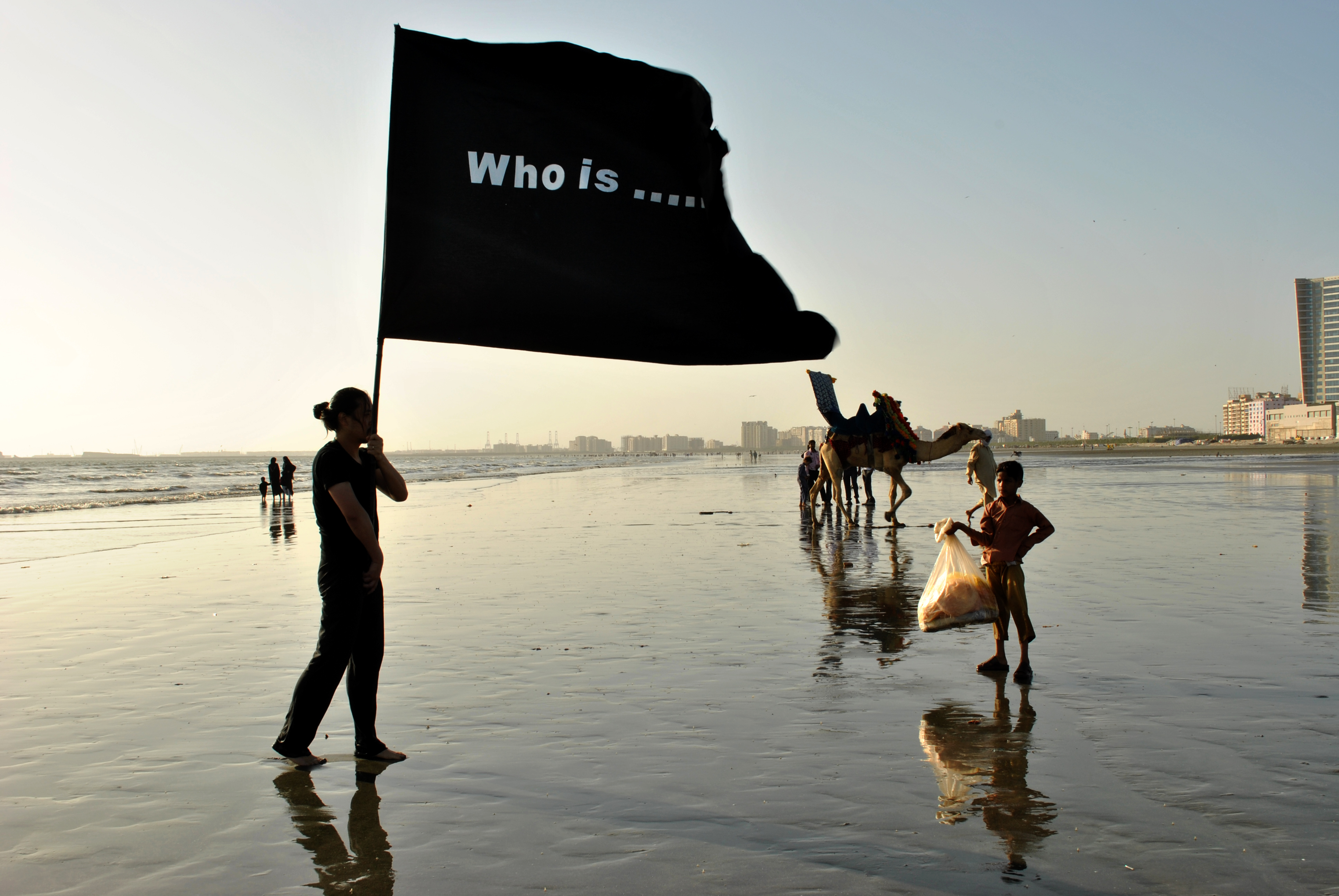 [caption id="attachment_56313" align="aligncenter" width="620"]
[caption id="attachment_56313" align="aligncenter" width="620"] Zhou Bin, Vasl International Artists’ Workshop, 2012[/caption]
Zhou Bin, Vasl International Artists’ Workshop, 2012[/caption]Adeela Suleman is a Visual Artist, Head of the Fine Art Department at Indus Valley School, and Coordinator of VASL Artists’ Collective in Karachi, Pakistan. We met and started a conversation about the specific state of contemporary art in Karachi, the constant tension felt in the region due to security issues, the different cultural and educational initiatives in her city, as well as specific projects developed by VASL Artists’ Collective. I asked Adeela –whom I warmly thank for her time– to speak further about these issues for ASEF culture360.
Herman Bashiron Mendolicchio: Could you please introduce VASL Artists’ Collective, its origin and mission, and tell me which are your main aims and activities?
Adeela Suleman: VASL is a registered not-for-profit space that was founded in 2001. It is a platform for contemporary art practice in Pakistan committed to creating a progressive space for experimentation and exchange. We are part of the Triangle Network and over the past 14 years we have hosted numerous workshops, residencies and significant local projects, thereby generating a new experience of making, understanding and viewing contemporary art in Pakistan.
[caption id="attachment_56312" align="aligncenter" width="588"]
 Vasl Internatioal Artists Residency, Lahore[/caption]
Vasl Internatioal Artists Residency, Lahore[/caption]VASL has now grown in international, regional and local stature and we are currently in the process of structural redirection. While in the past our programmes have led to the creation of our platform, after 14 years of activities, we are ready to build a strong and long-lasting platform to which programmes can be applied. This will entail increased choices in our activities and opportunities to gather local funds, enabling us to become an example of a sustainable non-profit cultural organization within the region.
Our objectives are:
- To actively assist, develop and promote new investigative and experimental art practices in all media.
- To promote discussion, understanding and appreciation of contemporary art issues and provide a forum for critical debate.
- To encourage and support the production and exchange of ideas by and among Indian, South Asian and international artists through production, exhibition and research dissemination.
- To actively facilitate an informal network of contemporary artists, both within the region and the global south.
- To develop new and informed audiences and to work with diverse communities in cultural outreach programmes.
- To support emerging artists and artists from smaller cities/marginal areas.
- To become a beacon for sustainable non-profit cultural activities in Pakistan and the wider region.
[caption id="attachment_56308" align="aligncenter" width="620"]
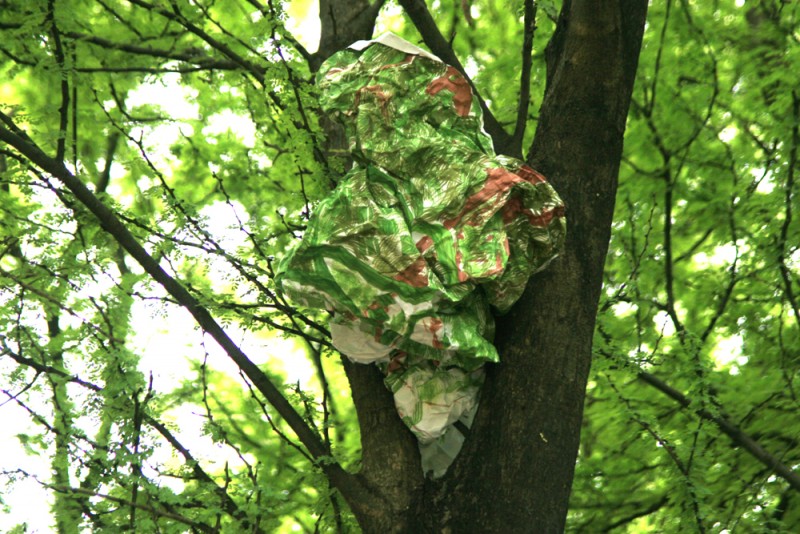 Muzzumil Ruheel, Rohtas International Artist Residency, Islamabad, 2011[/caption]
Muzzumil Ruheel, Rohtas International Artist Residency, Islamabad, 2011[/caption]HBM: Could you please describe your artists in residency projects? What are the main focuses of the residency? How do the artists connect with the city of Karachi and its cultural infrastructures?
AS: The community of artists in Pakistan is very small and fragmented. Once artists leave college or finish their training there is very little holding them together, there is little sense of community. This reduces the possibility for dialogue or exchange of progressive and research-oriented ideas that can inform students, other artists and the international artistic community.
VASL Artists’ Collective is able to provide an alternative platform to foster opportunities for artists through its diverse networks and resources, and it proves that artists can come together to inform their own art infrastructure instead of remaining dependent on the exchange of commodities, as well as shape the way that the international art world engages with this infrastructure.
Our workshops and residencies are catalysts not products, where ideas are activated for a stronger visual dialogue and for a more diverse field of visual art production in this country. While there is a strong emphasis on production during residencies and workshops, we are aware of the importance of distributing the positive outcomes of these activities through public programmes, outreach initiatives, research documents, and the creation of networks.
The Taaza Tareen residencies are a vital part of VASL’s residency activities. A dedicated programme for recently graduated Pakistani artists, Taaza Tareen (Urdu: freshly made) residencies typically select five or six artists from an open application procedure for a five-week collaborative residency in Karachi.
[caption id="attachment_56307" align="aligncenter" width="620"]
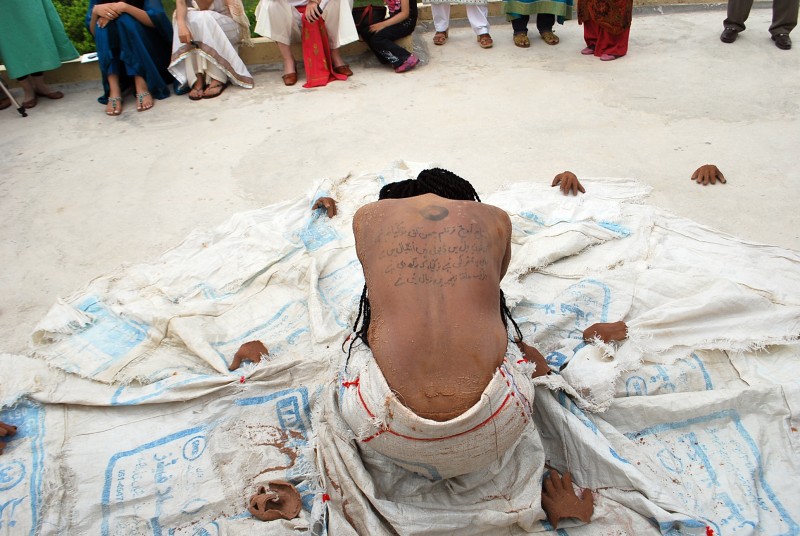 Khanyisile Mbongwa, Rohtas, International Artist Residency, Islamabad, 2011.[/caption]
Khanyisile Mbongwa, Rohtas, International Artist Residency, Islamabad, 2011.[/caption]HBM: What benefits do the local cultural and artistic sector in Karachi enjoy by hosting international artists and vice versa?
AS: The outcomes are:
- All the resident artists share their art practice through Art Shares (artists talk and slide presentation) organized by VASL at various locations, including galleries, art institutions and foundations.
- Networking opens opportunities for many local artists through international resident artist collaborative projects, residency opportunities in other countries, recommendations for curated shows, etc.
- Through our educational outreach programme, all resident artists design workshops and educational outreach programmes to interact with local primary school students, as well as art workshops for teacher training.
- It is a two-way process: resident artists also learn a lot from interacting with the local art scene.
[caption id="attachment_56306" align="aligncenter" width="620"]
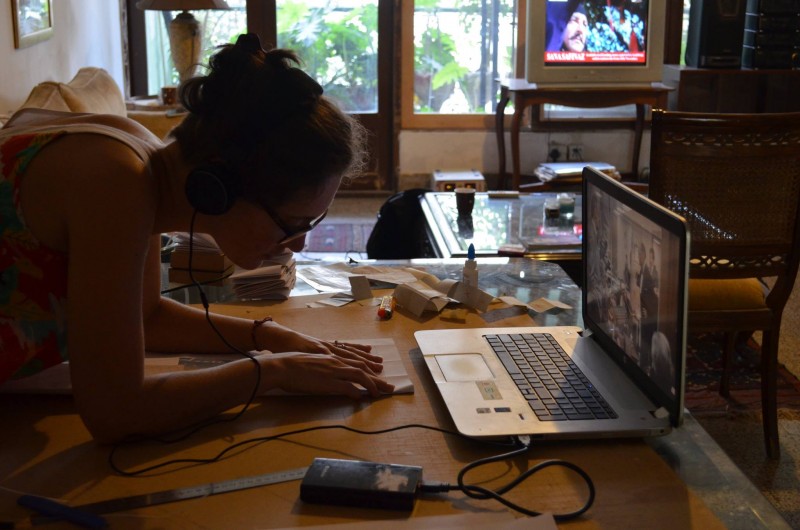 Helen Harris, Tazaa Tareen 7, Vasl Studio, 2014[/caption]
Helen Harris, Tazaa Tareen 7, Vasl Studio, 2014[/caption]HBM: Many of your activities are realized in collaboration with other partners. How important is collaboration and internationalization for VASL? And, what kind of partnerships, networks and international collaborations are you currently developing (in Asia, Europe and worldwide)?
For the past two or three years, we have emphasized the need to build VASL’s profile and develop stronger local, regional and international networks. We are proud to have come a long way, and have been able to reach individual funds to run an international curatorial research residency (see http://asia-europe-curatorialknowledge.org/); an outreach programme with the British Council; the HAREEP/VASL educational programme for children from rural and conflict-affected areas (supported by the Prince Claus Fund); and a number of solo artist residencies, (Art Jones – smART power residency funded by the US State Department; and Jamie George – Gasworks International Fellowship, part of the Triangle Network and supported by Arts Council England, along with other artist/researcher/curatorial self-funded visits to Pakistan).
At the same time, our local connections are increasing and VASL is being asked to provide skills and programming to numerous organizations around Pakistan. These achievements prove that the last two-year concerted push to develop the website, increase our international programming, and develop an international profile has managed to secure a good timetable with a healthy number of activities.
[caption id="attachment_56311" align="aligncenter" width="595"]
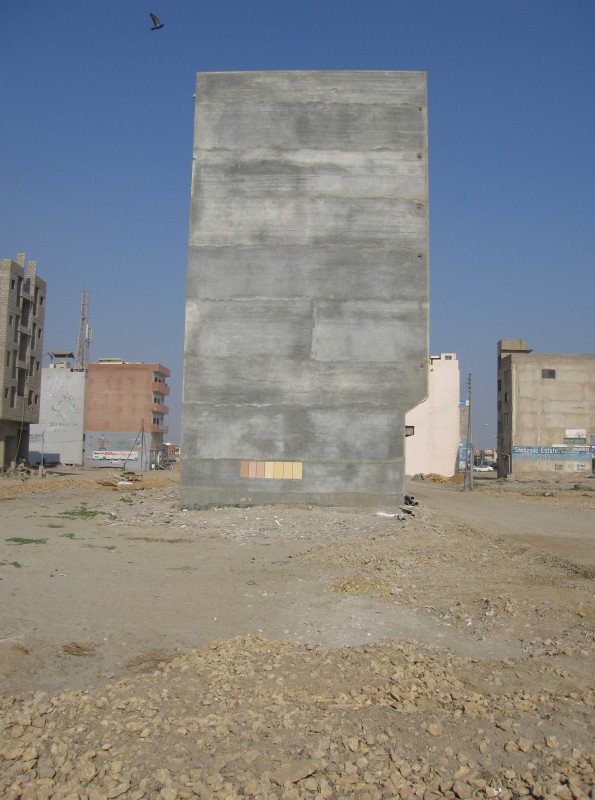 Sana Mustafa Ali, Build, 2010[/caption]
Sana Mustafa Ali, Build, 2010[/caption]HBM: In a recent talk, you mentioned the difficulties of working in art and culture in the region, largely connected to security issues and the fact that art is, unfortunately, not on the agenda of any of the country’s political parties. Could you please elaborate more on this?
AS: Karachi has a population of approximately 20 million. Being the most populous city of Pakistan, it has remained a powder keg of competing political interests, each patronising its own militant wing or gang of criminals. The general lawlessness and terror attacks in the city combined to form a lethal cocktail. The degree of bloodshed in the last decade was such that targeted killings and random terror attacks claiming around a dozen lives a day seemed to be the routine. There was a time when there was a bomb blast every day in this city. The other major cities of Pakistan were relatively safe. The other cities could only imagine the fear that Karachi experienced. As Laurent Gayer in his book Karachi - ordered disordered and the struggle for the city writes: “For the residents of Karachi, including the barricaded city elites, violence has become part of the order of things. This is not to say that violence has become acceptable to Karachiwalas, but simply that they cannot imagine a future without it”.
It became a city where clouds of paranoia circulated 24/7. The news channels were more explosive than any Pakistani drama, Bollywood or Hollywood film. It seemed that Kill Bill was a live performance.
I changed the title of my show from Confinement, Uncertainty to I had no choice but to hear you, After all it’s always somebody else who dies and the most recent show was titled Towards the end. The work became macabre and the humour with which I used to look at the city simply evaporated.
I started counting the number of people dying every day and was dedicating one bird to each death, but the numbers of deaths were multiplying much faster than my production. I started looking at the pictorial history in which heinous crime were documented, at the Mubarizuns, the elite army of the Khalifas, who were sent in to win a battle as the last option. I was losing the battle very fast and it was completely beyond my control.
[caption id="attachment_56305" align="aligncenter" width="620"]
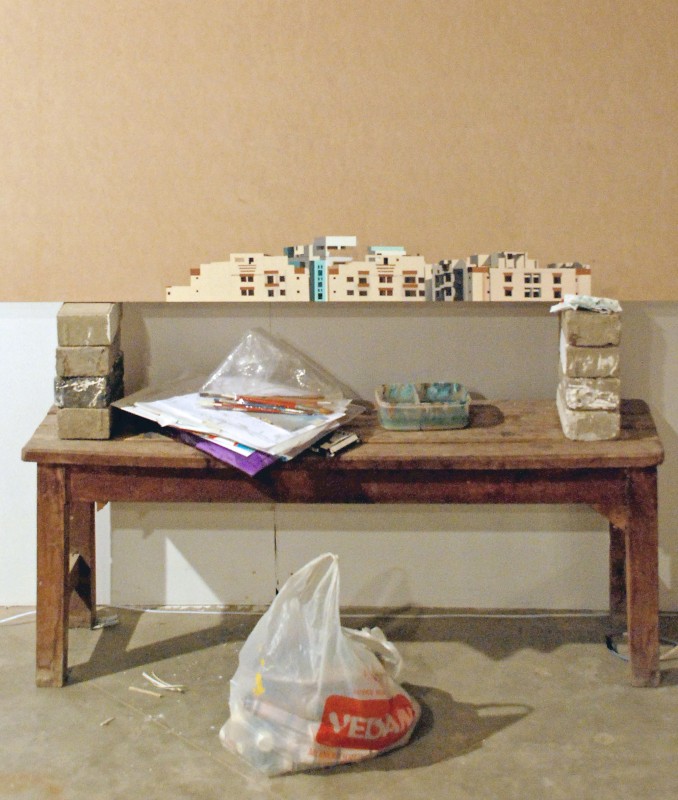 Ayesha Sultana, Tazaa Tareen 3, 2008[/caption]
Ayesha Sultana, Tazaa Tareen 3, 2008[/caption]HBM: How did the cultural and artistic initiatives and infrastructures fare in Karachi in this context?
AS: On one hand, people were losing hope and Karachi became a classic example of state failure. On the other hand, art and cultural activities were gaining momentum in the city. Planning ahead and organization over efficiency meant nothing for us. Whatever we planned was dependent on the situation, but this gave us immense strength to still host events and not give up. Individuals started taking initiatives. Over the last decade, since Karachi is an economic hub, more and more galleries have opened and a lot of collectives have flourished.
In the midst of insecurity, political turmoil and uncertainty, VASL Artists’ Collective has not stopped hosting local and international residencies for a single year since 2001 such as Mauj Collective, Tentative Collective, Sanat Initiative, NAPA, Foundation for the Museum of Modern Art, Zambeel Dramatic Readings, Pursukoon Karachi, Karachi Youth Initiative, I am Karachi, T2F and The Citizens Archive of Pakistan. Mohatta Palace Museum hosted long duration exhibitions such as The Holy Sinner retrospective of the great master Sadequain, The Rising Tide, a survey show of modern and contemporary Pakistani art, and most recently, Labyrinth of Reflection, a retrospective of Rashid Rana’s work. Small initiatives, such as Dhabba Art movement, St. Art, Rang de Karachi and Art School in Central Jail and now in Karachi Women’s Jail in the Landhi area sprung up. Karachi Arts Council became extremely active and started hosting festivals, events, conferences, and exhibitions almost every day. The former Nukta Art magazine, Nighaa Art Magazine, Online Art Now Pakistan are all based in Karachi. Events like Clay Triennale, Karachi Music Conference, Karachi Conference and the Sindh Art Fest were organized. Karachi Literature Festival hosted a section on art; all of this has had a ripple effect in the major cities of Pakistan. It was incredible when in 2013, more than 100 artists and designers living in Karachi joined hands and organized an exhibition about the Baldia Factory Fire – the biggest garment factory fire in the world which happened in Karachi, in Baldia town, where 255 workers were burnt alive due to criminal negligence. The city did not collectively respond to this event and the artistic community was the only community that responded to something so heinous involving the labour class. An exhibition was organized at Karachi Arts Council, initiated by the Faculty of Fine Art at the Indus Valley School of Art and Architecture.
[caption id="attachment_56310" align="aligncenter" width="620"]
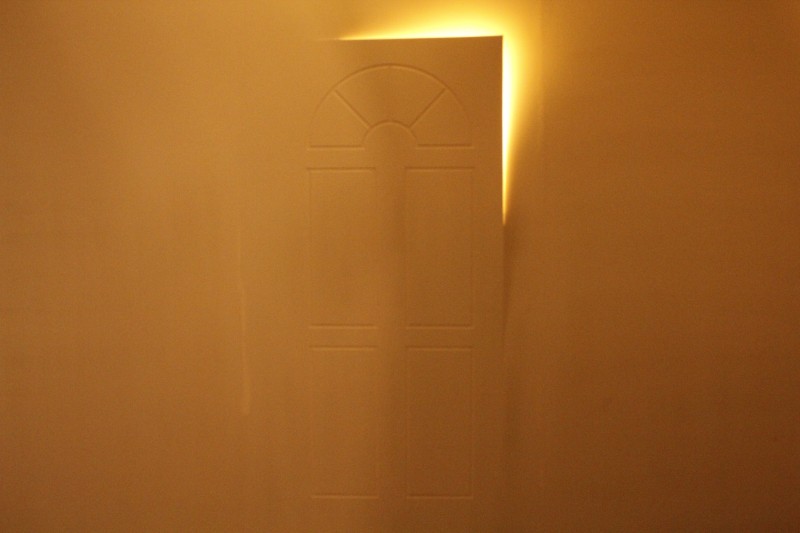 Safdar Ali, Tazaa Tareen 7, 2014[/caption]
Safdar Ali, Tazaa Tareen 7, 2014[/caption]HBM: Among other tasks and beyond your activities as an artist and the director of VASL, you are heading the Fine Art Department at Indus Valley School. Could you please tell me more about the state of education, specifically relating to contemporary art, in Karachi?
AS: There are few art schools in Pakistan that are awarding professional degrees. In Karachi, Indus Valley School of Art and Architecture and the Department of Visual Studies at Karachi University are the only two institutions doing so.
In Lahore, we have the National College of Arts, Lahore and Beacon House National University. In Rawalpindi, we have the National College of Arts – Rawalpindi
The art schools in Pakistan are the best in the region. Compared with India, Bangladesh, Nepal and Sri Lanka, the contemporary art education offered is far superior to any of the other institutes in the region.
The reason for this is that in Pakistani art schools, across the board, contemporary artists serve as the teachers. They are the movers and shakers of the art world and, through them, students and new graduates have ample opportunities to showcase their works locally and internationally.
[caption id="attachment_56309" align="aligncenter" width="533"]
 Safdar Ali, Tazaa Tareen 7, 2014 (2)[/caption]
Safdar Ali, Tazaa Tareen 7, 2014 (2)[/caption]HBM: In terms of cultural funding, do you have any institutional support? How do you fund your activities?
AS: Currently VASL is supported by local individuals and we receive a humble monthly amount from Getz Pharma Pakistan. Getz Pharma has also supported our programmes. Just recently, they generously provided us with a residential apartment. Before that, we were renting the space.
As for international funding, until last year we received on-and-off funding from the Asia Europe Foundation (ASEF), Arts Collaboratory, Hivos, Stiching Deon, Ford Foundation, and so on. This included yearly funding and funding for specific programmes.
HBM: Concerning the future, what are your next projects?
AS:
- From October to November 2015 we are hosting three artists in residency: Weileng Tay from Hong Kong/Singapore is the finalized foreign artist. We are still in the process of confirming the two Pakistani artists.
- We are launching our eight-year catalogue, most probably in November.
- In December 2015, we are running our Faculty Mentoring Workshop on Art and Cultural Studies in Karachi (Dec 4-12). The workshop will be conducted by Zahid Chaudhary (Princeton University, USA) with contributions from Iftikhar Dadi (Cornell University, USA), Hammad Nasar of Asian Art Archive (Hong Kong).
- In early spring 2016 we have our young artists’ residency, hosting Taaza Tareen VII.
Useful Links:
VASL Artists’ Collective
Indus Valley School of Art and Architecture
Karachi Arts Council
Herman Bashiron Mendolicchio holds a European PhD in “Art History, Theory and Criticism” from the University of Barcelona. His current lines of investigation involve the subjects of intercultural processes, globalization and mobility in contemporary art and cultural policies, the interactions between artistic, educational, media and cultural practices in the Mediterranean and the cultural cooperation between Asia and Europe. He has participated in several international conferences and developed projects and research residencies in Europe, Asia and the Middle East. As an art critic and independent curator he writes extensively for several international magazines. He is special correspondent for ASEF culture360.
Similar content
posted on
15 Nov 2018
from - to
01 Nov 2010 - 31 Mar 2011
posted on
10 Oct 2017

